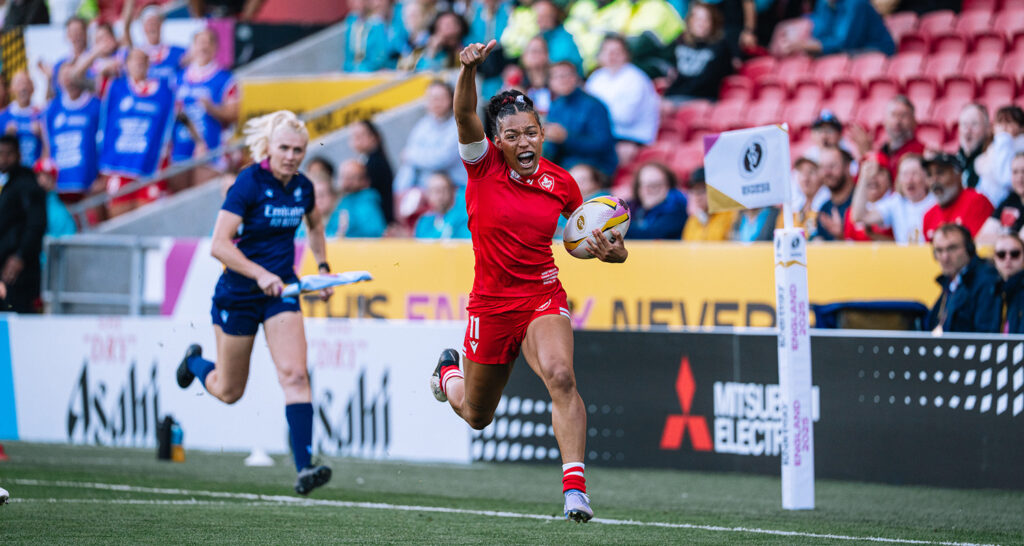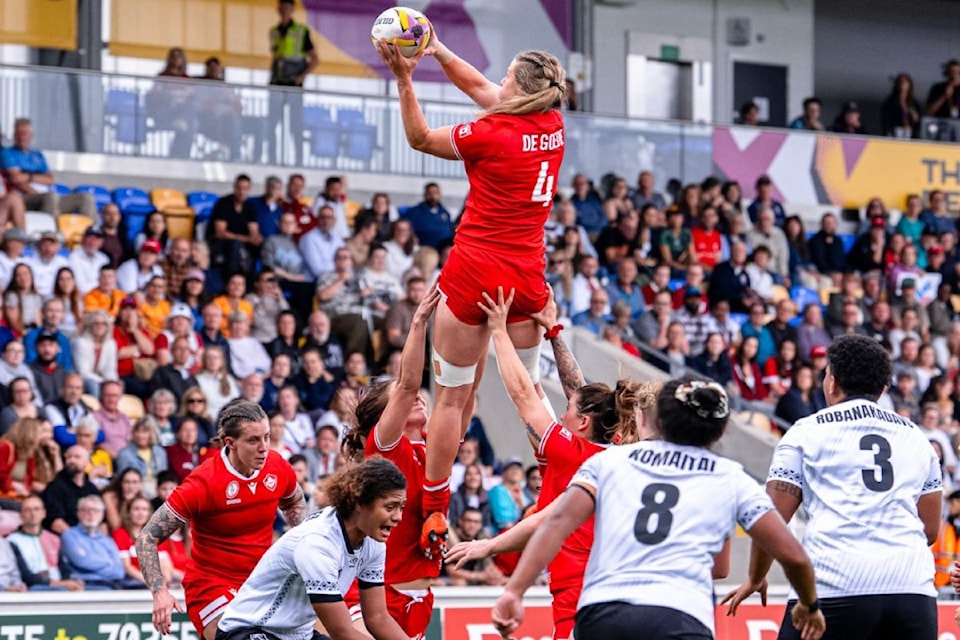The final of the Rugby World Cup featuring Canada vs. England is this coming Saturday, September 27 at 8am PT/11am ET. Canada triumphed over the New Zealand Black Ferns, who had won the last two Rugby World Cup, in spectacular fashion in the semi-finals.
What makes this accomplishment even more impressive is that Canada is only a semi-professional team. As part of “Mission: Win Rugby World Cup”, the team crowd-funded $1 million of the $3.5 million deemed to be required to field a World Cup winning team. This pales in comparison to the professional sides of England, France, and New Zealand who have far more funding and salaries to boot.
But, when it comes to the quality of play, the difference certainly isn’t showing. I’ve never seen such a complete performance from a Canadian rugby team and am excited to watch as they take on the #1 in the world, England, next weekend. On paper, it seems like a daunting David vs. Goliath challenge, but players like Sophie de Goede, Justine Pelletier, and Asia Hogan-Rochester have put on a show, with the team demonstrating clean, clever passing, strong scrums, and exceptional decision making. They have all the ingredients to take Mission: Win Rugby World Cup to its natural conclusion.
Rugby has long been my favourite sport to watch for its fast pace and strategy-on-the-fly. Games last just 80 mins (two 40 min halves) with all players needing the strength and stamina to run the pitch for a full game. As well, the refs are mic’ed up and it’s really interesting listening to their rulings and clear conversations with players (who are incredibly respectful to the ref, unlike in other sports.)
While you might be keen to watch, I know that there are some key learning obstacles since rugby is still in its infancy here in Canada. Here are a few tips to help you understand the game:
Yes, you have to pass backwards or laterally. The trick is to run onto the ball with pace, so you can cut through the defence or find a gap. If you pass it forward, or “knock it on” – meaning the ball moves forward often due to a fumble or it bouncing off your body – you lose possession. You can kick it forward, although this often results in the other team picking it up and losing possession. This is sometimes done defensively if the ball is downfield in a high-risk spot.
Unlike football, you have to touch the ball down in the “try zone” with pressure and be in control in order to score a try – you can’t simply pass into an “end zone.” Sometimes balls are “held up” by the defenders and no try is awarded. You score 5 points for a try, 2 points for a conversion of the try, and 3 points for a penalty goal (kick) or drop goal.

In 15 aside (15s), there are two types of players: forwards and backs. Forwards are the big players that you probably think of when you hear the word “rugby.” They are involved in scrums, where the two teams bind together, with the team in possession putting the ball into the middle, feeding it to their “hooker” (yes, lol) who hooks the ball with their foot to gain possession. Then, the scrum ideally pushes forward to gain yardage. The “backs” are typical slighter and faster players that run the ball and try get past the defence by running dummies, throwing switches to change direction, and exploiting gaps and overlaps.
You defend by tackling the ball carrier below the sternum. Anything above is considered a “high tackle” and can have you sent to the aptly named “sin bin” to serve your penalty. After a tackle, the tackled player must release the ball, and the tackler must release the tackled player. The team in possession typically “rucks” over the ball, protecting it from the opposition, and keeping it between their feet until it can be passed. Or, sometimes there is an effective “counter ruck” and the other team gains possession.
If the ball goes out of play on the sidelines (in touch), you do a “line-out”, which is essentially a throw-in, where both times line up in a tunnel formation with the team in possession throwing it down the middle. Players are typically hoisted into the air, in order to try to pluck the ball out and bring it down. Sometimes this results in a “driving maul”, which is where a few players bind together, and try to propel the ball carrier and the ball forward.

I think that covers the basics. I hope you’re amped for next week. Go Canada!



